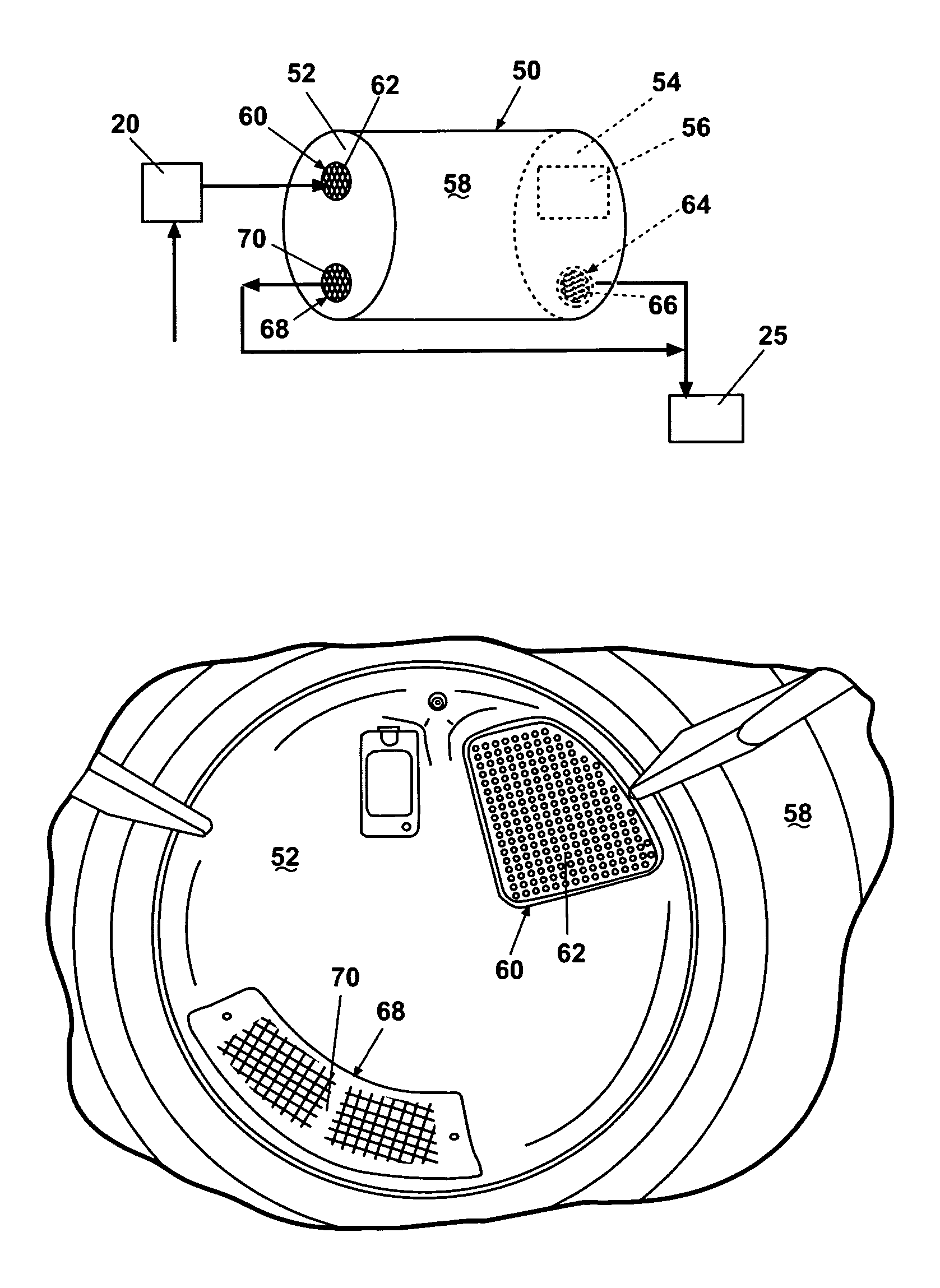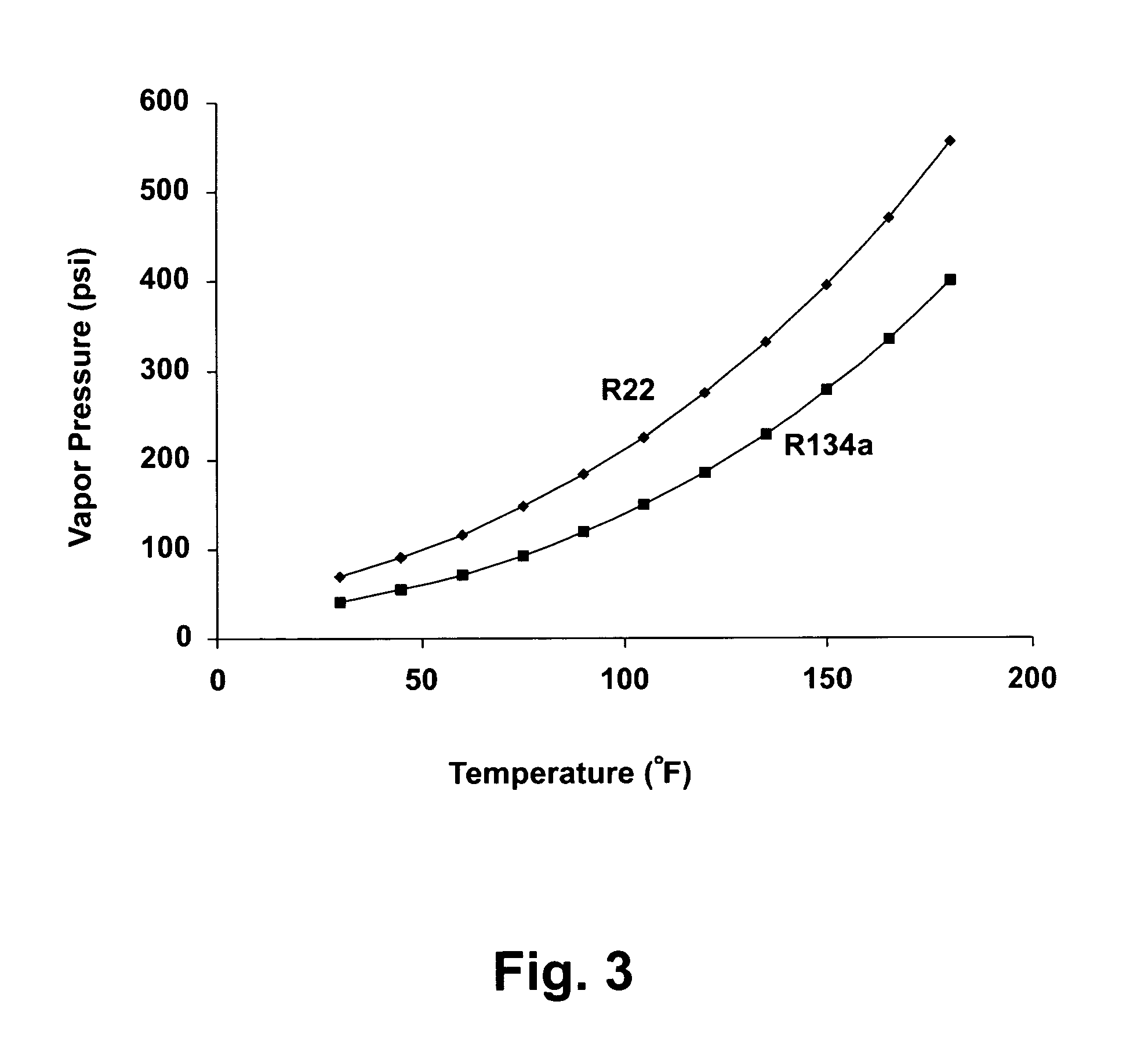Multiple outlet air path for a clothes dryer
a clothes dryer and airflow technology, applied in the field of electric clothes dryers, can solve the problems of large cost, long dry time, and integration of complete laundry centers into living space, and achieve the effects of accelerating drying clothes, reducing plastering of clothes, and increasing the speed of airflow
- Summary
- Abstract
- Description
- Claims
- Application Information
AI Technical Summary
Benefits of technology
Problems solved by technology
Method used
Image
Examples
Embodiment Construction
[0027]The invention relates to the air flow path through the drum of a dryer. A preferred embodiment, as set forth herein, appears in a heat pump dryer having an overall configuration not unlike that shown in FIG. 1. For the heat pump embodiment according to the invention, it was found desirable to incorporate most of the components associated with a heat pump system (compressor, evaporator, condenser, tubing, etc.) into a conventional resistance heater dryer cabinet. Preferably, the heat pump will draw 2.2 Kilowatts of power utilizing 250 cfm of airflow.
[0028]A reciprocating compressor is preferred, mainly for reliability reasons. The pressure ranges under which normal operation occurs (in order to maximize condenser temperatures) suggest the use of a more reliable reciprocating compressor. A rotary compressor design is an acceptable alternative, if reliability is not a primary concern.
[0029]In order to achieve the highest possible air temperatures, the preferred embodiment uses R-...
PUM
 Login to View More
Login to View More Abstract
Description
Claims
Application Information
 Login to View More
Login to View More - R&D
- Intellectual Property
- Life Sciences
- Materials
- Tech Scout
- Unparalleled Data Quality
- Higher Quality Content
- 60% Fewer Hallucinations
Browse by: Latest US Patents, China's latest patents, Technical Efficacy Thesaurus, Application Domain, Technology Topic, Popular Technical Reports.
© 2025 PatSnap. All rights reserved.Legal|Privacy policy|Modern Slavery Act Transparency Statement|Sitemap|About US| Contact US: help@patsnap.com



